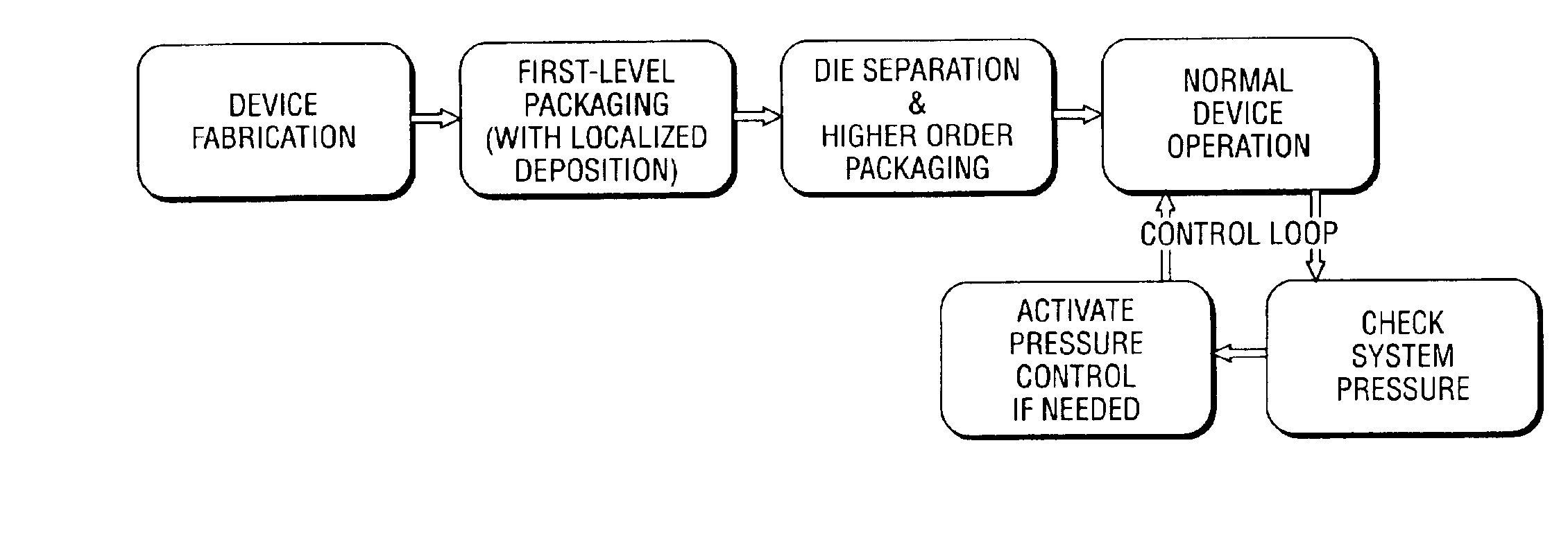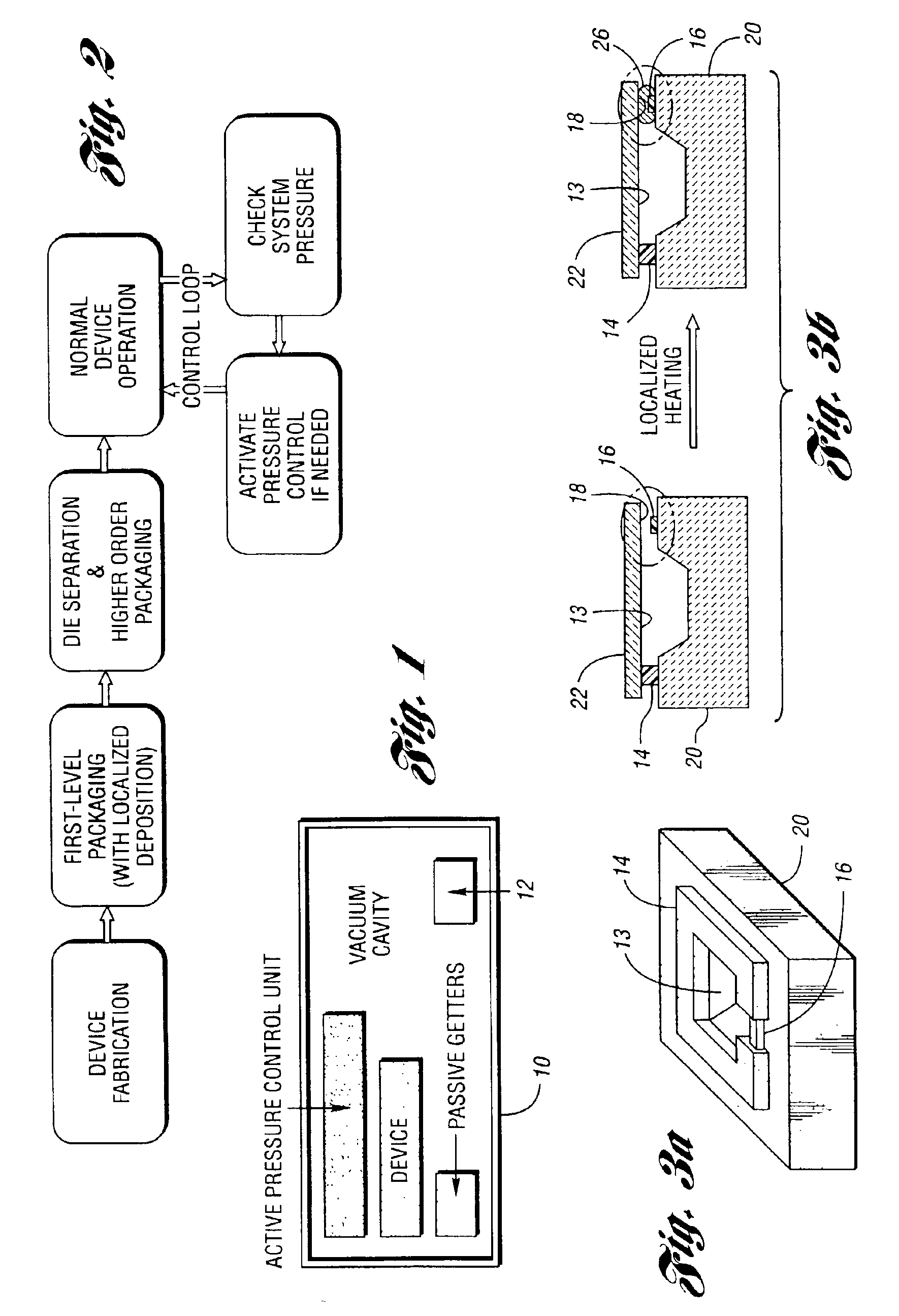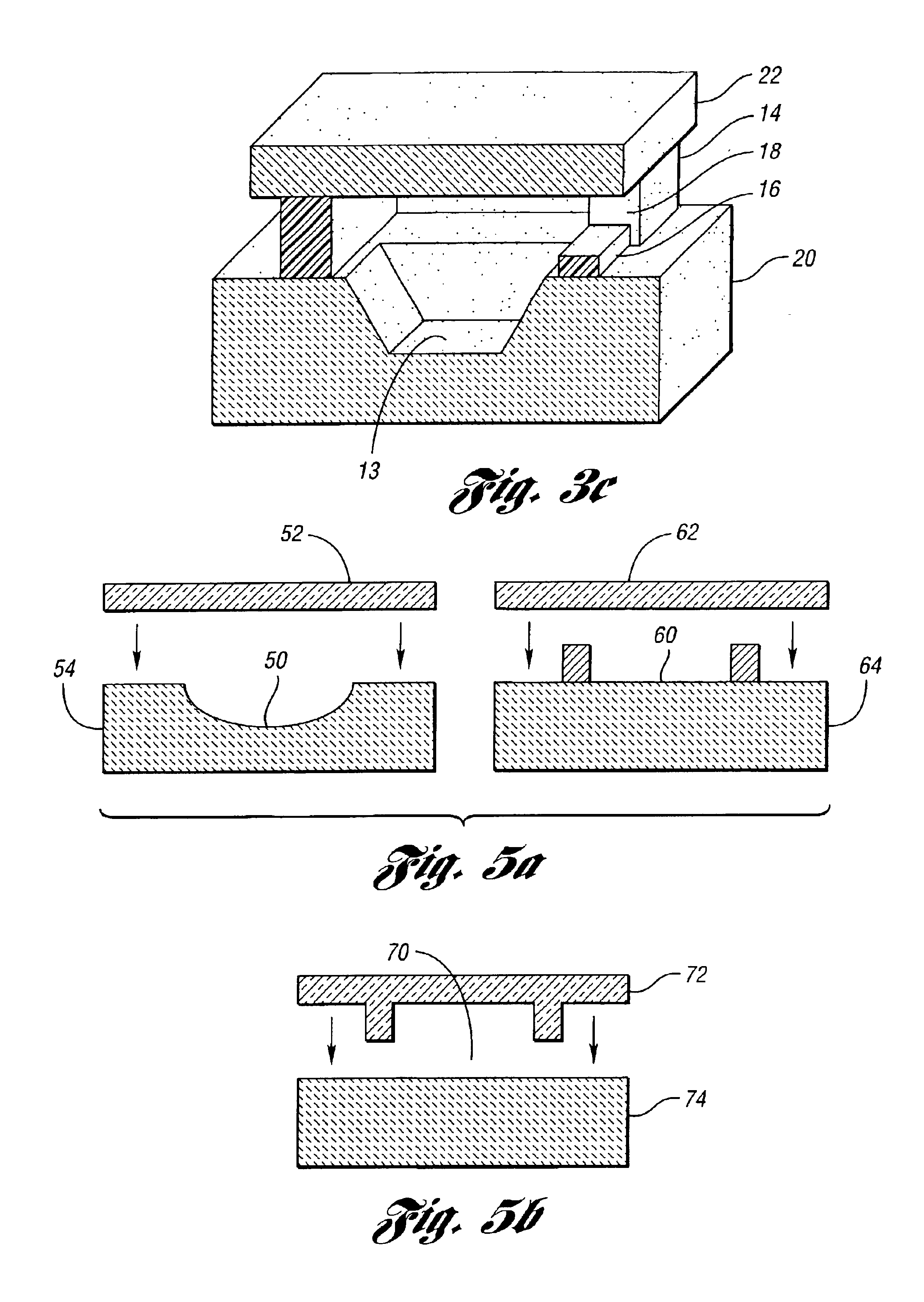Method and system for locally sealing a vacuum microcavity, methods and systems for monitoring and controlling pressure and method and system for trimming resonant frequency of a microstructure therein
a vacuum microcavity and local sealing technology, applied in the direction of fluid tightness measurement, semiconductor/solid-state device testing/measurement, instruments, etc., can solve the problems of lack of standardization in wafer-level mems device packaging, complicated already challenging packaging task, and high cost of packaging. , to achieve the effect of reducing the resonance frequency of the microstructur
- Summary
- Abstract
- Description
- Claims
- Application Information
AI Technical Summary
Benefits of technology
Problems solved by technology
Method used
Image
Examples
Embodiment Construction
[0059]In general, a post-packaging pressure control scheme integrated with a wafer-level packaging technique is described to address the problems associated with the prior art. The post-packaging pressure control scheme offers a closed-loop, in-chamber pressure monitoring and active pressure control capability to the packaged cavity. This scheme is designed to minimize vacuum degradation in the packaged vacuum microcavity over time, hence improving device performance and lifetime. The wafer-level packaging technique, which is fully compatible with various device fabrication methods (including bulk-micromachining, surface-micromachining, and dissolved wafer process), can be applied to many existing high-performance MEMS devices. This packaging technique is designed to eliminate the high, and unpredictable residual pressures by providing a low and consistent base pressure inside the vacuum microcavity.
Post-Packaging Pressure Control Scheme
[0060]The general approach of this system is t...
PUM
| Property | Measurement | Unit |
|---|---|---|
| Pressure | aaaaa | aaaaa |
Abstract
Description
Claims
Application Information
 Login to View More
Login to View More - R&D
- Intellectual Property
- Life Sciences
- Materials
- Tech Scout
- Unparalleled Data Quality
- Higher Quality Content
- 60% Fewer Hallucinations
Browse by: Latest US Patents, China's latest patents, Technical Efficacy Thesaurus, Application Domain, Technology Topic, Popular Technical Reports.
© 2025 PatSnap. All rights reserved.Legal|Privacy policy|Modern Slavery Act Transparency Statement|Sitemap|About US| Contact US: help@patsnap.com



